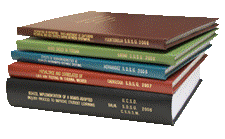Libraries, University of Nebraska-Lincoln

Archival Master’s Theses from the University of Nebraska-Lincoln
Date of this Version
6-1963
Document Type
Thesis
Citation
Thesis (M.S.)—University of Nebraska—Lincoln, 1963. Department of Agronomy.
Abstract
Corn yield response to liming acid Nebraska soils was evaluated in this field study by means of paired limed and nonlimed treatments. Soil reaction, topography, and other criteria were used in selecting 90 locations in 25 counties in eastern Nebraska and in the sandy outwash plains area of the state. All locations were limed in the spring of 1961 and harvested in the fall of the years 1961 and 1962. The bushels yield per acre had a high of 156 and a low of 29 bushels. Corn leaves taken at the early silking stage were analyzed for various elements. Soil element composition was also analyzed, at the time of leaf sampling.
Liming increased corn yields in this study. Corn yields from 38 locations in 1962 were increased 8 bushels per acre. Differences in mean yields due to liming were highly significant for 33 locations harvested both years. Limed and irrigated plots had a higher yield than the nonirrigated plots. No significant correlation between leaf nutrient elements and higher yield of corn due to liming was found. Likewise, there was no direct correlation between the soil properties (including pH, lime requirement, base saturation, exchangeable calcium, and nitrification rate) and the percentage increase in yield of corn due to liming.
It appears that the addition of limestone to acid Nebraska soils will increase corn yields in a continuous corn cropping system. This information should be useful in making recommendations for liming Nebraska soils based on pH and lime requirement tests. However, further information is needed to ascertain the soil properties that directly related to yield responses from liming.
Advisors: H. F. Rhoades and Delno Knudsen.


Comments
Copyright 1963, the author. Used by permission.